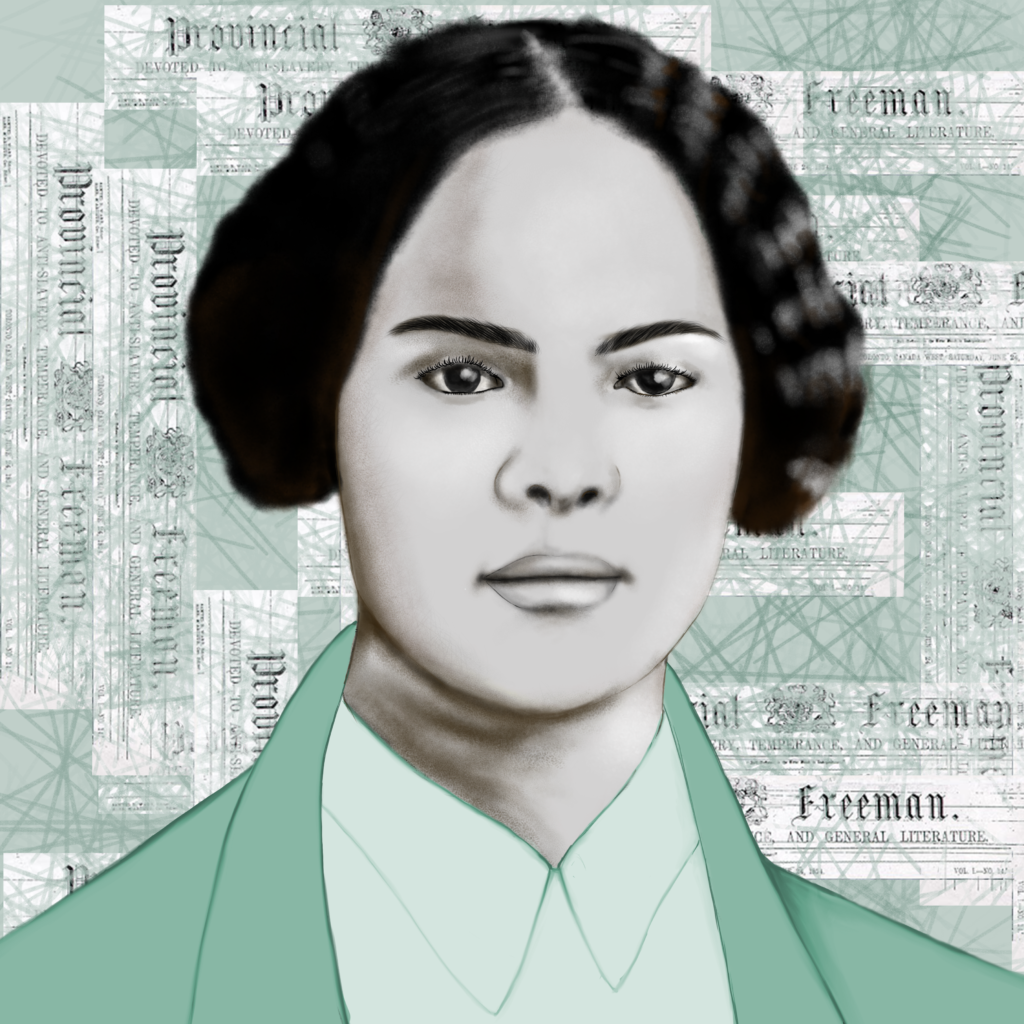Meet Mary Ann Shadd Cary: The Woman Who Made a Difference in Canadian Publishing

In This Article
February is Black History Month and we wanted to feature some of the amazing POC who’ve made a difference in Canadian history. Throughout the month, you’ll meet trailblazers in health, business, tech and community services – each representing one of our streams.
We’re highlighting stories of racism and resilience, discrimination and progress. These individuals showcase some of the work that’s already been done to challenge systems of prejudice and inequality while highlighting that our work is far from over. We hope you question your knowledge and learn something new.
Now we’d like to introduce you to Mary Ann Shadd Cary, Canada’s first Black female newspaper publisher.

This incredible image of Mary Ann Shadd Cary was created by Dorcas Markwei (of Lynsow Creative), a Black-Canadian illustrator and designer. Dorcas works both in digital and traditional media and she is passionate about creating diverse representation in brand artworks.
Mary Ann Shadd Cary, better known as Mary Ann Shadd, was born free in Delaware (a known slave state) in 1823. Her parents were abolitionists who lived near the Underground Railroad and often helped Black people who were trying to escape slavery. When Shadd was young, her family moved to Pennsylvania so she and her siblings could go to school – something that wasn’t allowed for Black children in Delaware.
Shadd’s passion for education grew and she both graduated and became a teacher before she was 20. She opened her own school in Wilmington and went on to teach in Norristown, Pennsylvania and Trenton, New Jersey – both known Black communities.
In 1850, the United States Congress passed the Fugitive Slave Act. This law allowed any white person to arrest and detain anyone of African descent who they thought was a runaway slave. Unless the slave provided proof of freedom, they wouldn’t be let free. This law also applied to slaves who escaped in the past and had been living in freedom for years. Even those born free risked being captured. This law scared the Black community and thousands of people fled to safety in Canada, including the Shadds.
At the time this law was introduced, Shadd was teaching in New York City. In 1851, she attended the Convention of Colored Freeman in Toronto where she met Black activists who were publishers of the newspaper Voice of the Fugitive. They encouraged her to take a job in Canada and as a result, Shadd moved to Windsor, Ontario where she opened a school for the fugitive slave population.
She felt strongly for these members of her community who had to leave their lives behind in fear of being captured. This inspired her to publish A Plea for Emigration in 1852, a work that promoted Canada as being a place of refuge for slaves and free Blacks. However, her activism didn’t sit well with everyone and she was fired from her teaching position.
Shadd wanted a platform to share her ideas and opinions without being censored, so she opened her own newspaper in 1853, coining it The Provincial Freeman. Over the next year, Shadd worked to promote her paper and increase subscription rates, with success! On March 25, 185, Shadd’s paper started publishing weekly issues in Toronto, making Shadd the first Black woman in North America to create and edit a newspaper.
Shadd’s paper focused on antislavery content. She advocated for Ontario and Canada at large, deeming it a safe place for the Black community to plant roots. Shadd’s pieces often spoke about equality and Black integration in Canadian society, something she advocated for often. Shadd also championed women’s rights and featured many women’s organizations and leaders in her articles. She hired many Black editors and contributors who represented and fought for the Black community.
Alongside her efforts with the paper, Shadd helped form the Provincial Union, an antislavery organization for the Black community. The organization hosted teas and sponsored events to raise much-needed funds for The Provincial Freeman.
Despite these fundraising efforts to keep the paper afloat, Shadd had to close down shop in 1860, seven years after starting the publication.
After working on the paper, Shadd served as one of the only women to recruit Black soldiers during the Civil War. Following that, she became a lawyer and frequently advocated for women’s rights and suffrage. She was a founder of the Colored Women’s Progressive Franchise Association and a member of the National Woman Suffrage Association.
Shadd dedicated her life to the people in her community. She fought for freedom, equality, women’s rights and fair treatment for people of all races. She was truly an advocate for the people and for her activism, she was designated a Personal of National Historic Significance in Canada. In October 2020, she was also honoured as a Google Doodle for her 197th birthday.
Feel inspired to help others in your community? Check out our course catalogue and start your journey towards a meaningful career in community services.
In This Article
Once you take the first step, one of our Student Admissions Advisors will get in touch to better understand your goals for the future.
Apply Now